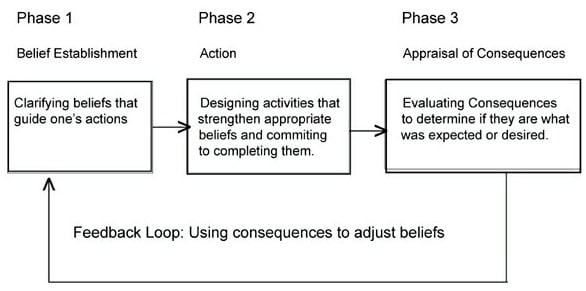REBT - Rational Emotive Behavioural Therapy
Rational Emotive Behavioural Therapy, or REBT for short, belongs to the behavioural School of therapy and is closely related to CBT. REBT is an active-directive therapy based on challenging faulty beliefs to resolve emotional and behavioural problems.
REBT is a theory devised by Albert Ellis, an American psychologist, who in the 1950’s founded the ABCD technique. Ellis believed that we can think our way out of distress.

Key features of the REBT:
REBT is based on the ABCD technique, named after the four stages that it involves:
- Action (for example, you crash your car)
- Belief (this leads you to believe that you are a bad driver)
- Consequence (you stop driving because you fear you will have another accident)
- Dispute (the counsellor disputes that you are a bad driver, and points out that most people have at least one accident in their driving career).
The goal of REBT therapy ABCD model is to help clients replace irrational thinking with rational thinking.

About Albert Ellis
Albert Ellis (1913–2007) held both an MA and a PhD in clinical psychology from Columbia University. He was apparently a sickly child who lacked self-confidence, and he struggled as a young man to talk to women of his own age.

Wanting to find a partner, he decided to try to tackle his shyness by going to Central Park in New York and making himself talk to 100 women. Although he didn’t get a date from this, he became more confident about talking to women and managed to alter what he saw as his irrational fear.
Underpinning Philosophy of REBT
Ellis was interested in the philosophy of the ancient Greeks, particularly that of Marcus Aurelius (who features in the film ‘Gladiator’, where he is played by Richard Harris). Aurelius is reported to have said:
“Very little is needed to make a happy life; it is all within yourself, in your way of thinking”.
This philosophy gave Ellis the idea that humans have a tendency to think irrationally, based on self-defeating beliefs that lead to problematic cycles of behaviour.
Free Handout Download
REBT
Ellis believed that this technique could help people think their way out of distress, with the support of the therapist, whose role is to challenge their beliefs. Human difficulties may often be a product of irrational or magical thinking.
REBT encourages clients to get into the habit of considering other explanations for their difficulties, and to gain strategies for moving their life on.
Another example would be that a client might believe that everybody is looking at them. The therapist might challenge them to use the reflections in a shop window to observe whether people really are looking at them or are just going about their business.
REBT Technique Example
- A = Activating event. For example: "I have had an accident in my car"
- B = Belief gained from the event: "I am a bad driver"
- C = Consequence, gained from the belief: "I will never drive again"
If a client was to present with this issue, the therapist would gently (hopefully!), dispute the faulty belief.
- D = Dispute.
Here is an example of REBT technique in action:
Therapist:
Ok, you have had a car accident, but you also tell me you drive 40,000 miles a year, and have done for the last 10 years, and in that time you have had only had 2 accidents.
Is there any other way of thinking that you could use to alter your belief that “I will never drive again."
In this piece of work, the therapist is helping the client to consider other thinking strategies and challenge a faulty belief.
Once the client substitutes a more healthy belief such as "Accidents happen. I have driven over 400,000 miles in 10 years and only had 2. That does not make me a bad driver", then the consequence may change to “I will drive again, accidents happen and maybe I need to be a bit more careful."
This theory tells us:
How we think affects how we feel.
How we feel affects how we behave.
How we behave affects how we live our lives
Change the thought = Change the Consequence.
REBT vs CBT
Unlike psychoanalytical therapies, which look in detail at the client’s childhood, REBT therapists – while acknowledging the client’s past – work in the here and now.
Person-centred counselling shares REBT’s focus on the present, but differs in that it is non-directive and is concerned with emotions rather than with thoughts and behaviours.
REBT is closely related to cognitive behavioural therapy (CBT), which also derives from the behavioural school of psychology.
Both approaches seek to help clients replace irrational with rational thinking. The therapist sets tasks and goals – hence these approaches being known as ‘active-directive’. For example, clients are encouraged to undertake homework to practise techniques.
REBT and CBT therapists believe that we can think ourselves out of our problems.
Free Handout Download
REBT